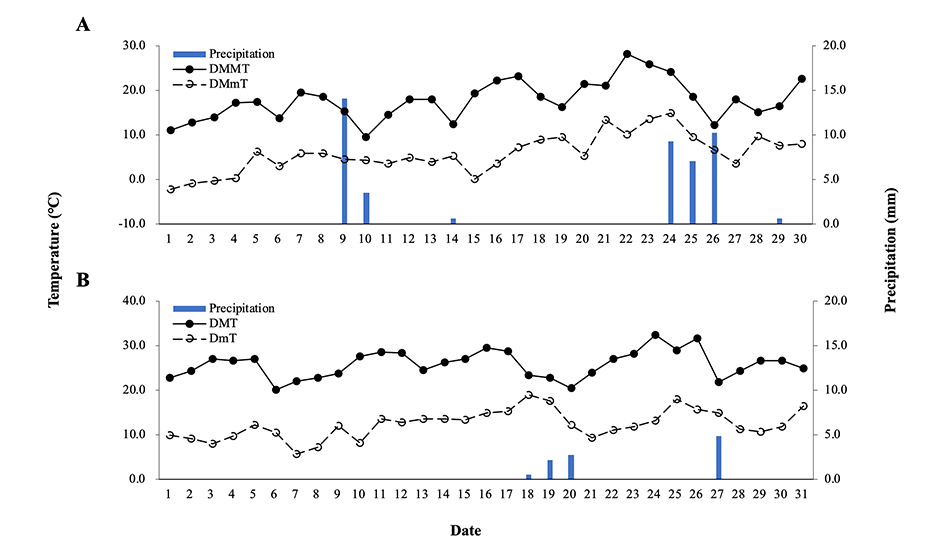Abstract
Natural turfgrass playgrounds have been suggested as an alternative to bare land or artificial turf grounds for its excellence in user safety, nature friendly space, and environment control function. However, natural turfgrass playgrounds, though having many benefits and a high preference, are limitedly used at schools because of the burden of turfgrass care. In this study, playground quality by human compaction before and after spring green-up of
Figures & Tables

Fig. 1. Weather conditions (DMT: Daily maximum temperature, DmT: Daily minimum temperature, and precipitation) of April (A) and May (B) 2019 in Hoengseong, Gangwon.


